 "You can tell a Finn but you can't tell him much" (youcantellafinn)
"You can tell a Finn but you can't tell him much" (youcantellafinn)
02/12/2015 at 15:13 • Filed to: planelopnik
 6
6
 44
44
 "You can tell a Finn but you can't tell him much" (youcantellafinn)
"You can tell a Finn but you can't tell him much" (youcantellafinn)
02/12/2015 at 15:13 • Filed to: planelopnik |  6 6
|  44 44 |
Lately there has been a lot of hype regarding thrust vectoring and how the 3D thrust vectoring of the Su-37 gives it a huge advantage in a dogfight. The theory is that thrust vectoring allows the pilot to point the nose at his target more quickly and therefore he can kill his target quicker. It does look impressive in a flight demonstration, but does it really give that much of an advantage?
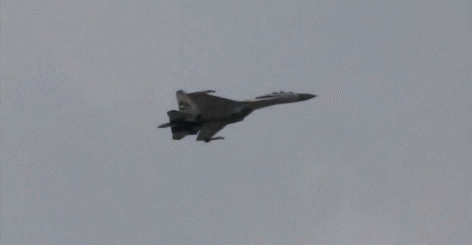
A while ago there was an article on !!!error: Indecipherable SUB-paragraph formatting!!! where former Air Force pilot Lt. Col. Fred "Spanky" Clifton talks a little bit about it. He stated that thrust vectoring can give an advantage but it isn't necessarily all it's hyped up to be. His money quote is this:
!!! UNKNOWN CONTENT TYPE !!!
Thrust vectoring, whether 2D or 3D, is a two-edged sword. If you're going to use it, you'd better kill me now. Ever seen videos of the Super Flanker spinning around like a top and doing back flips at an airshow? First off, the jet is slow – not a place to be in a multi-bogey environment. Second, when thrust is steered off-axis the axial component of thrust is decreased.
I've been thinking about this over the last few days and it turns out he's right. You see, back in the 1960's an Air Force pilot by the name of !!!error: Indecipherable SUB-paragraph formatting!!! developed the !!!error: Indecipherable SUB-paragraph formatting!!! . Colonel Boyd was a rare genius when it comes to the physics of flying aircraft and tactical theory in general. To give you some idea of his genius, he played a large role in the design of both the F-16 and the A-10. As an instructor at the USAF Fighter Weapons School he became known as "30 Second Boyd". He had a standing bet that he could take anyone in a 1v1 dogfight within 30 seconds. With the other pilot starting on his tail. Boyd never had to pay out on his bet. His Energy-Maneuverability (E-M) Theory basically stated that the aircraft with the most energy will win a dogfight.
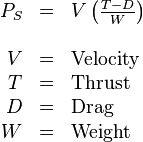
E-M Theory boils down to one very simple equation. This accounts for the velocity of the aircraft, its thrust and its weight. Ps is the specific excess energy of the airplane. The more excess energy the plane has, the more likely it is to win a dogfight.
If we take a look at the Su-37 above look at how fast it is going. While it is impressive to watch it tumbling around and seemingly defying the laws of physics, think of its energy. It has none. Sure, it can swing the nose around quickly to get on target but it may not even have enough energy to keep tracking the target. Watch the end of the maneuver and it is falling like a rock. In a 1v1 dogfight it might get its nose around quickly enough to launch the golden BB. But if that BB misses it is literally a sitting duck. In a many v. many dogfight you really don't want to go where that pilot is. It may be able to get a shot at its target, but the targets wingman is going to kill it.
Thrust vectoring does make for a nice airshow demonstration, but I wouldn't call it the ultimate trump card in a dogfight.
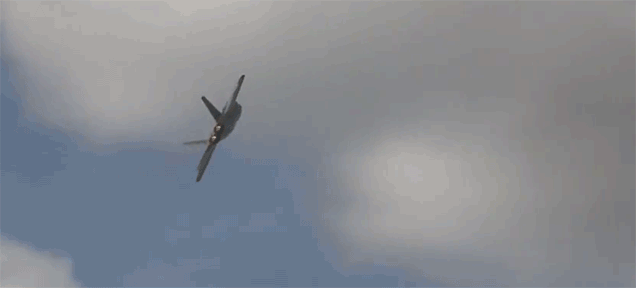
 MrPseudonym
> You can tell a Finn but you can't tell him much
MrPseudonym
> You can tell a Finn but you can't tell him much
02/12/2015 at 15:19 |
|
BLOS
RIP Dogfight.
 ttyymmnn
> You can tell a Finn but you can't tell him much
ttyymmnn
> You can tell a Finn but you can't tell him much
02/12/2015 at 15:21 |
|
His Energy-Maneuverability (E-M) Theory basically stated that the aircraft with the most energy will win a dogfight.
As proven by Claire Chennault and his Flying Tigers, flying P-40s against much more nimble Japanese Zeros.
 You can tell a Finn but you can't tell him much
> MrPseudonym
You can tell a Finn but you can't tell him much
> MrPseudonym
02/12/2015 at 15:23 |
|
Our new F-4 Phantom II is so awesome that it will shoot everything down with missiles. We don't need no stinking guns. /Oops
The demise of the dogfighter has been talked about for 50+ years. Sorry mate, dogfighters will be around as long as we have airplanes.
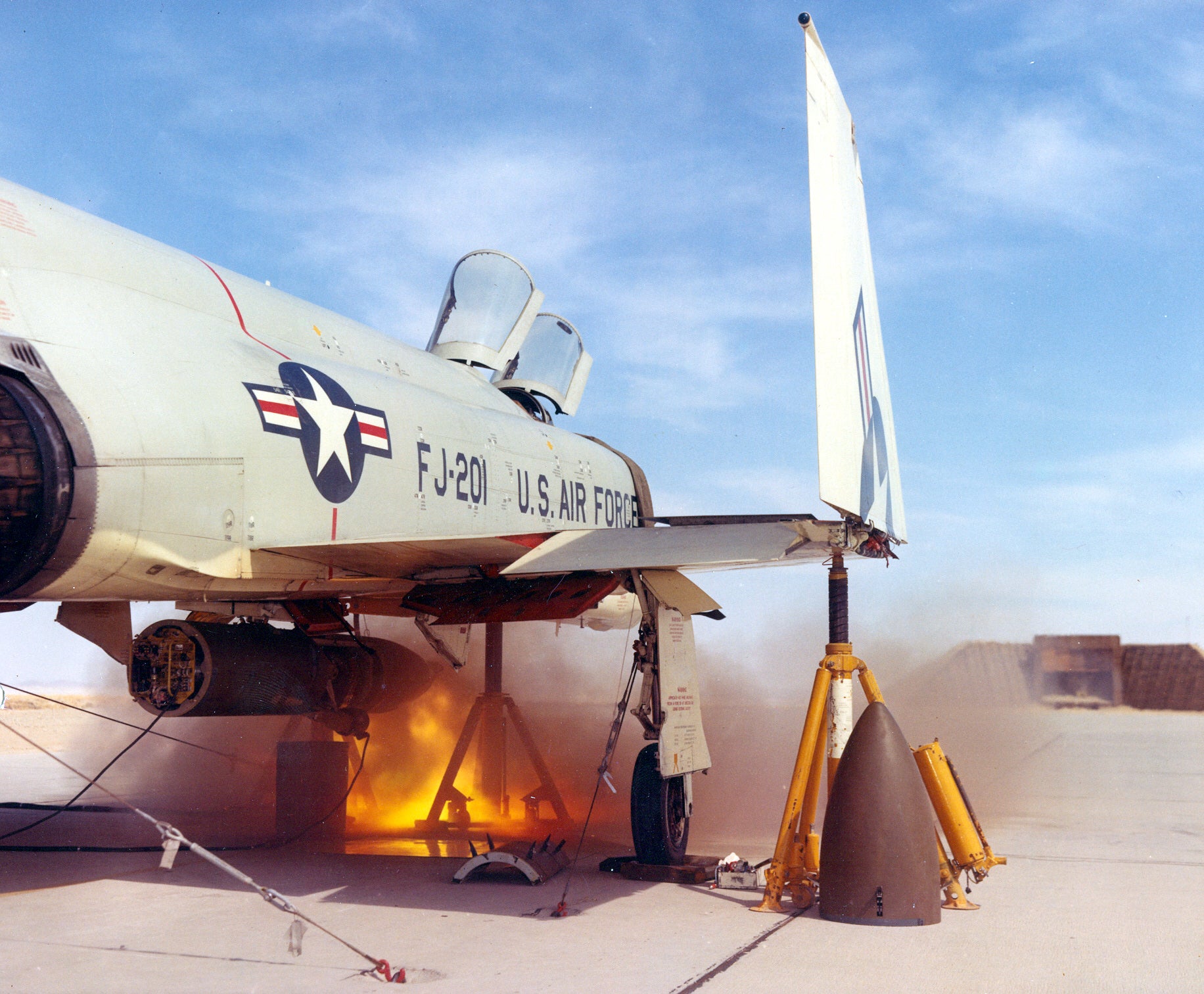
 Mr. Ontop, No Strokes, No Smokes...Goes Fast.
> You can tell a Finn but you can't tell him much
Mr. Ontop, No Strokes, No Smokes...Goes Fast.
> You can tell a Finn but you can't tell him much
02/12/2015 at 15:42 |
|
Think dog fighting will still be taught once this is all drone based? I would like to think so. Imagine the moves that could be made once human weakness is removed from the equation.
 yamahog
> You can tell a Finn but you can't tell him much
yamahog
> You can tell a Finn but you can't tell him much
02/12/2015 at 15:48 |
|
Agreed, STOVL is probably the best application for thrust vectoring.
/biased
 JustWaitingForAMate
> You can tell a Finn but you can't tell him much
JustWaitingForAMate
> You can tell a Finn but you can't tell him much
02/12/2015 at 15:53 |
|
Instead they'll just keep mounting cannons on jets with decreasing ammunition counts until they end up with a flag sticking out the end with BANG! written on it.
 You can tell a Finn but you can't tell him much
> yamahog
You can tell a Finn but you can't tell him much
> yamahog
02/12/2015 at 15:53 |
|
May be the best application, but I think STOVL is overrated. IMO the compromises to make an airplane STOVL capable are just too costly in terms of how they reduce the effectiveness of applying force to the target. Mostly it's the V that really screws things up and I think a STOL design results in a better overall product. If you've got enough room for a short takeoff, then you've got enough room for a short landing, you don't need to land vertically. It's that last 10% that massively increases the complexity and weight of the airframe.
 uofime
> You can tell a Finn but you can't tell him much
uofime
> You can tell a Finn but you can't tell him much
02/12/2015 at 15:54 |
|
its all a bit misleading/over simplified especially for these cases with 3d vectoring since the error form pretending those variables are scalars becomes large.
T D and V aren't necessarily colinear
for that matter what is the frame of reference for the whole thing?
 You can tell a Finn but you can't tell him much
> Mr. Ontop, No Strokes, No Smokes...Goes Fast.
You can tell a Finn but you can't tell him much
> Mr. Ontop, No Strokes, No Smokes...Goes Fast.
02/12/2015 at 15:55 |
|
Yes, I think dogfighting will be around forever. The trick becomes how do you get the information to the pilot of a drone since they really need to have full 360 degree visibility. But with the way VR is coming along I think it is possible that soon they will be able to have a drone with full visibility all the way around it.
 yamahog
> You can tell a Finn but you can't tell him much
yamahog
> You can tell a Finn but you can't tell him much
02/12/2015 at 15:57 |
|
Yea, if you're willing to accept the weight penalty, the added functionality is cool, which is reason enough for the Marine Corps.
 Spoon II
> You can tell a Finn but you can't tell him much
Spoon II
> You can tell a Finn but you can't tell him much
02/12/2015 at 16:00 |
|
I look at it as an excellent ace in the hole. Sometimes an unexpected maneuver can make all the difference. Plus, I'm sure it has uses in spin recovery and whatnot.
 Mr. Ontop, No Strokes, No Smokes...Goes Fast.
> You can tell a Finn but you can't tell him much
Mr. Ontop, No Strokes, No Smokes...Goes Fast.
> You can tell a Finn but you can't tell him much
02/12/2015 at 16:01 |
|
Oh, I think they'll figure something out....*cough*Oculus rift*cough*
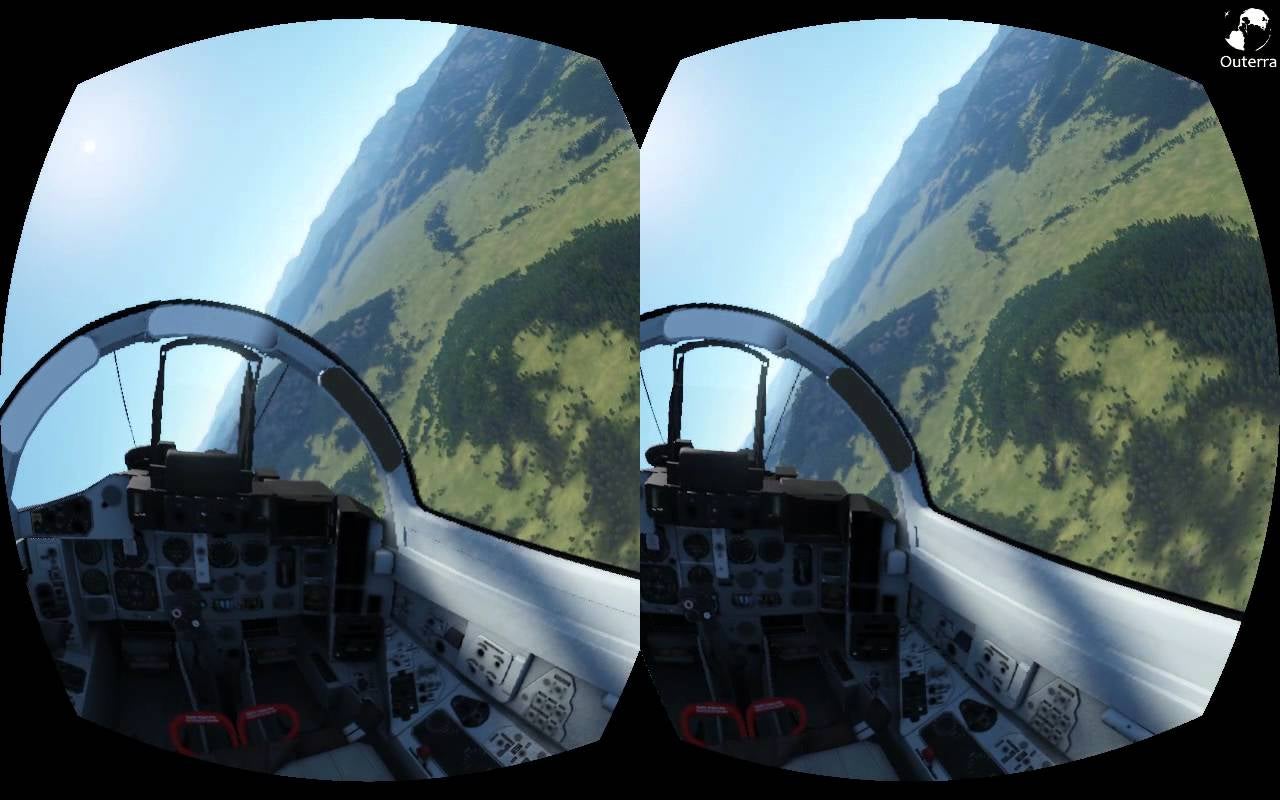
 davedave1111
> You can tell a Finn but you can't tell him much
davedave1111
> You can tell a Finn but you can't tell him much
02/12/2015 at 16:13 |
|
What the hell is going on in that picture?
 davedave1111
> You can tell a Finn but you can't tell him much
davedave1111
> You can tell a Finn but you can't tell him much
02/12/2015 at 16:14 |
|
My impression from what I've read is that VL comes pretty much free with STO, if you go the thrust-vectoring route, because a plane with a full load-out is so much heavier than when it comes in to land having fired everything off.
 T5Killer
> yamahog
T5Killer
> yamahog
02/12/2015 at 16:18 |
|
Yep STOVL it works good for a CAS standpoint where you can set up a FARP near theFEBA and have reduced turn around time for aircraft that cannot loiter the battlespace as long or have expended all their munitions.
 You can tell a Finn but you can't tell him much
> uofime
You can tell a Finn but you can't tell him much
> uofime
02/12/2015 at 16:19 |
|
The E-M equation is a simplification, but it's one that works. Like any engineering problem you simplify things to a point that the equations are easy but still give useful information. If you want to learn more read the article I linked.
 davedave1111
> You can tell a Finn but you can't tell him much
davedave1111
> You can tell a Finn but you can't tell him much
02/12/2015 at 16:21 |
|
That equation's interesting, because it seems not to include height as a factor. Is that right? Or is that just because it assumes that even if you start with a height advantage, by the time you actually get into the dogfight you'll have converted that to speed?
In general, my impression is that TV is another tool in the toolbox, not a silver bullet. Used right, it'll presumably offer advantages, but using it right might well mean not using it much.
It does seem to me - and I'm not a pilot, let alone a fighter pilot - that in the right circumstances losing velocity could be desirable, let alone acceptable. If so, then in those situations TV would be very valuable indeed. As I understand it, the classic dogfight involves two planes flying in a circle, each trying to turn tighter than the other. If you can suddenly kick your tail round and fly straight across the middle, even though you've lost speed the other plane is going to be in the shit because it'll have to break off and come back in before it can get onto your tail.
 T5Killer
> davedave1111
T5Killer
> davedave1111
02/12/2015 at 16:22 |
|
Ground testing of a Gun pod on a F-4 it is a SUU-16 or SUU-23 with a M61 20mm Vulcan.
 You can tell a Finn but you can't tell him much
> davedave1111
You can tell a Finn but you can't tell him much
> davedave1111
02/12/2015 at 16:22 |
|
Right, but the thrust vectoring adds so much weight and complexity that IMO it isn't worth it. You can create a STOL design with much less complexity that gives you 90% of the wow factor that STOVL gives you with more downrange capability in terms of loiter time or munitions payload since you don't have to carry around the weight of the thrust vectoring system. In the case of the F-35 this also includes a fan that is only used for takeoff and landing and outside of that flight regime it is literally dead weight that eats up room and mass that could be used for payload and/or fuel.
 You can tell a Finn but you can't tell him much
> davedave1111
You can tell a Finn but you can't tell him much
> davedave1111
02/12/2015 at 16:27 |
|
Right, TV is definitely a tool that can be very useful. But it isn't the silver bullet that some people have made it out to be which is more the point I was trying to make. Going back to the FA article, there is a further quote from Lt. Col. Clifton
What's happening? The Flanker is dropping like a rock at slow speed (no lift is being produced by the wing). If the Flanker pilot does not kill me now, the other edge of the sword is about to fall. He's automatically building in vertical turning room for me and it's going to take an unacceptable amount of time for him to get enough smash back to take it away due to his low airspeed. If I'm still alive I'm turning him into a strafe rag.
If you lose speed you lose energy. You better make your shot because if you miss the other plane is going to light you up even though he may have to make a big loop to get his nose pointed at you. It takes time for an airplane to go from low speed to high speed, and that time is more than it will take a good pilot to come back for a second pass at you.
 You can tell a Finn but you can't tell him much
> davedave1111
You can tell a Finn but you can't tell him much
> davedave1111
02/12/2015 at 16:29 |
|
Early F-4's were produced without internal guns because they were going to shoot everything down with missiles. They quickly realized that missiles aren't foolproof and F-4's weren't very good at dogfighting with no guns. As a stopgap they added an external gun pod and went back to the drawing board to add an internal gun to later F-4's.
 davedave1111
> You can tell a Finn but you can't tell him much
davedave1111
> You can tell a Finn but you can't tell him much
02/12/2015 at 16:29 |
|
"You can create a STOL design with much less complexity that gives you 90% of the wow factor that STOVL gives you"
What I was saying is that as I understand it you can't. There's no design for a STOL plane which doesn't use thrust vectoring, so the VL comes along with the rest of it. It's not the point, just a bonus.
The F35's fan is a particular oddity, since its main purpose is to significantly reduce the per-unit cost of the F35. I know, I know, that's not how it looks right now, but the B variant will significantly increase the overseas sales are the whole point of the F35 program. (Travis keeps throwing shit at the F35 because he's either ignoring, or doesn't understand, that point. The US can realistically sell enough F35s to make it much cheaper, and could hope, at best, to sell enough to turn a profit on the whole shebang.)
 You can tell a Finn but you can't tell him much
> Mr. Ontop, No Strokes, No Smokes...Goes Fast.
You can tell a Finn but you can't tell him much
> Mr. Ontop, No Strokes, No Smokes...Goes Fast.
02/12/2015 at 16:30 |
|
Exactly where I was going with that. But picture not having the cockpit in your way.
 davedave1111
> T5Killer
davedave1111
> T5Killer
02/12/2015 at 16:33 |
|
Oh right, yes, I see now. I somehow managed to think the plane was facing towards the camera, in which case that flame would have been exhaust from a missile-ly looking thing.
I'm not sure how I managed that, given that the jet exhaust is visible, and that jet fighters don't have the pilot sitting behind the engine like a Spitfire.
 You can tell a Finn but you can't tell him much
> davedave1111
You can tell a Finn but you can't tell him much
> davedave1111
02/12/2015 at 16:33 |
|
The SAAB Viggen had STOL capabilities without thrust vectoring and it dates to the 60's. It was capable of operating off of 500 meter airstrips and had features like a preselectable thrust reverser that would engage as soon as there was weight on wheels.
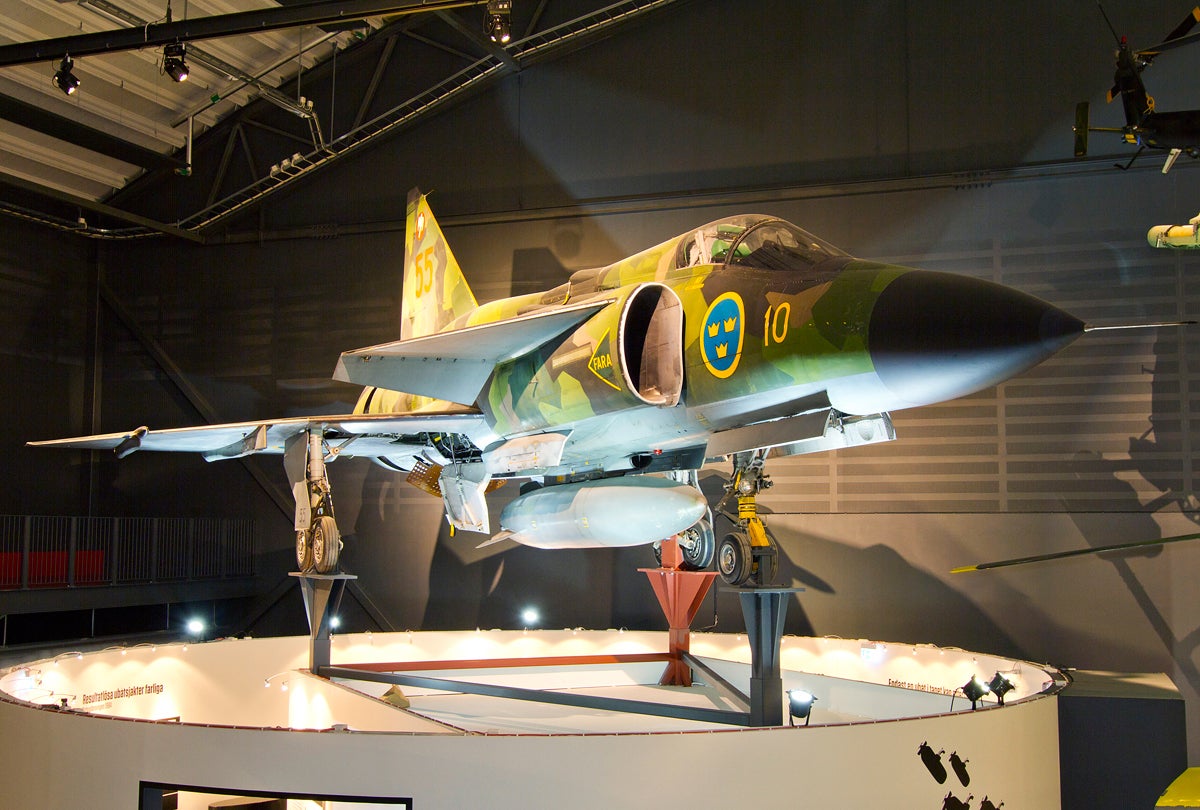
 davedave1111
> You can tell a Finn but you can't tell him much
davedave1111
> You can tell a Finn but you can't tell him much
02/12/2015 at 16:35 |
|
I'd somehow focused on the pretty, pretty fire and missed which direction the plane was facing, so I thought there was a missile under there going off on the ground, or something like that.
I knew the F-4 was designed for missile-only combat, but I never realised they had an external gun pod at one point. Although it seems obvious now you mention it :)
 Mr. Ontop, No Strokes, No Smokes...Goes Fast.
> You can tell a Finn but you can't tell him much
Mr. Ontop, No Strokes, No Smokes...Goes Fast.
> You can tell a Finn but you can't tell him much
02/12/2015 at 16:37 |
|
I actually think that would help the 1st gen pilots. It would give the psychological picture of the cockpit which would help them keep the space that the plane actually takes up in mind during missions.
 GhostZ
> Mr. Ontop, No Strokes, No Smokes...Goes Fast.
GhostZ
> Mr. Ontop, No Strokes, No Smokes...Goes Fast.
02/12/2015 at 16:38 |
|
Ever seen how high speed trading algorithms combat eachother and adapt to maximize profits?
Yeah, that.
 You can tell a Finn but you can't tell him much
> Spoon II
You can tell a Finn but you can't tell him much
> Spoon II
02/12/2015 at 16:38 |
|
It definitely has its place, it just doesn't automagically turn a plane into an unbeatable dogfighter as some would have you believe.
 You can tell a Finn but you can't tell him much
> ttyymmnn
You can tell a Finn but you can't tell him much
> ttyymmnn
02/12/2015 at 16:39 |
|
Yep, tactics and skill trump equipment capabilities most days.
 Mr. Ontop, No Strokes, No Smokes...Goes Fast.
> GhostZ
Mr. Ontop, No Strokes, No Smokes...Goes Fast.
> GhostZ
02/12/2015 at 16:40 |
|
I've heard about it. I would like to see it visualized.
 davedave1111
> You can tell a Finn but you can't tell him much
davedave1111
> You can tell a Finn but you can't tell him much
02/12/2015 at 16:41 |
|
Yes, I remembered that bit from that article. But that 'you'd better make your shot' bit does rather depend on how hard making that shot is going to be.
"It takes time for an airplane to go from low speed to high speed, and that time is more than it will take a good pilot to come back for a second pass at you."
Really? I have to say, I'm quite surprised. Are these planes that good at carrying speed through radical turns? Because the other pilot is going to have to pull a 180 to come back at you, right?
I think we're broadly in agreement on the efficacy of TV, but I do wonder about whether strategic planning can turn the tactical mix of advantages and disadvantages into something much stronger. If there is a situation in which TV conveys a major advantage - and we seem to be agreeing that there could well be - then the ability to create that situation often would be a silver bullet.
 GhostZ
> Mr. Ontop, No Strokes, No Smokes...Goes Fast.
GhostZ
> Mr. Ontop, No Strokes, No Smokes...Goes Fast.
02/12/2015 at 16:48 |
|
At its most basic
http://motherboard.vice.com/blog/what-high…
And an article about it in general.
 davedave1111
> You can tell a Finn but you can't tell him much
davedave1111
> You can tell a Finn but you can't tell him much
02/12/2015 at 16:54 |
|
Well, yes. And the Kukurzniks could take off in about 100m with a full load. But we're talking about modern fighters.
I assume that, with enough flaps and thrust, you can make even a heavy plane take-off in a short distance, but then that's going to entail its own set of compromises.
 uofime
> You can tell a Finn but you can't tell him much
uofime
> You can tell a Finn but you can't tell him much
02/12/2015 at 16:56 |
|
yeah, except if you do a simple dimensional analysis of the equation it doesn't work, all the stuff in the parenthesis cancels dimensionally (1) and you're left with velocity = energy. No, no it does not.
 You can tell a Finn but you can't tell him much
> uofime
You can tell a Finn but you can't tell him much
> uofime
02/12/2015 at 17:21 |
|
The E-M equation was developed by John Boyd in the 1960's. It works. I'm sure you're an excellent engineering student, but you're not smarter than the guys who developed it. Before you completely disregard it, do the research to see where it comes from. And as you get further in your studies you'll see that engineering is an applied science where we generate useful equations that are simplifications of the actual systems we are modeling.
 The Compromiser
> JustWaitingForAMate
The Compromiser
> JustWaitingForAMate
02/12/2015 at 22:07 |
|
Each flag will be a cost overrun and have to have spanish subtitles. $20k min, per.
 Two Drink Minimum
> You can tell a Finn but you can't tell him much
Two Drink Minimum
> You can tell a Finn but you can't tell him much
02/13/2015 at 10:06 |
|
The biggest dogfight advantage with thrust vectoring is the ability to rate the nose of the aircraft so a pilot can cut inside the turn radius of an opponent and get off a solid shot. This is a terrific asset in a turning fight, where as things slow down the guy with the tighter turn rate holds the cards. Heck, the mere presence of vectoring means that opposing pilots have to be ready for a sudden change in turn rate from an opponent.
But as noted. vectoring trades energy for turn rate. So if your opponent sees the maneuver and snaps over to reverse his turn, your energy state is now lower than your opponent, which hands him a ton of options.
What I wonder about is the impact in dog fighting of high off-boresight missiles slaved to helmet mounted targeting systems. Those really change the rules, since you no longer have to get your nose on a target to produce an effective shot.
 You can tell a Finn but you can't tell him much
> Two Drink Minimum
You can tell a Finn but you can't tell him much
> Two Drink Minimum
02/13/2015 at 13:36 |
|
In the FA article Lt. Col. Clifton talks a little bit about that. From what he said the HOBS missiles were a huge benefit in terms of getting kills. Here is his story about that. He managed to get a missile kill while the opposing plane was trying to get guns on him.
Being on the shooting end of the equation, I saw shot opportunities I would've never dreamed of with the AIM-9L/M. Those on the receiving end were equally less enthused about being 'shot' from angles they couldn't otherwise train to. I was once playing bandit for a couple of F-16s in visual 2 v 1 Air Combat Maneuvering. I was offensive on the wingman and had temporarily lost sight of the fight lead. I reacquired a tally-ho (visual contact) on him as he was pulling lead for a high-angle gun shot. Instead of calling me 'dead' with an AIM-9M, he flew through AIM-9M launch parameters trying to get gun video on me. His attempt put him in launch parameters for an Archer shot, so with a push of a button on the right throttle I commanded the seeker head to slave to the HMS line-of-sight and was able to call a kill shot on him. Imagine pulling lead for a gun shot and getting killed by the target!
As for the high turn rate that thrust vectoring gives you there are counters for that. By using a displacement roll a plane with a larger turn radius can still manage to turn inside of a plane with a tighter turn radius. In this case the defender has a better turn radius, but by using vertical separation and rolling the attacker can still turn inside the defender to get a good shot off. Even if the defender has a way tighter turn radius because of TV the attacker still manages to keep a lot more energy. How TV would affect this I don't know for sure. But if you look at it, the TV may allow the defender to come all the way around while the attacker is still rolling away. The downside of that for the defender is that they may have lost so much airspeed and altitude by the time they come around that they can't point the nose vertical enough to get a shot.
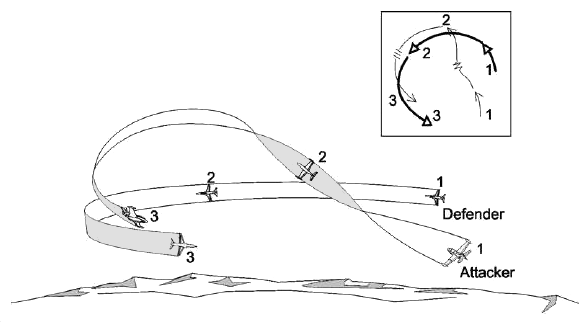
It definitely makes for interesting discussion.
 You can tell a Finn but you can't tell him much
> uofime
You can tell a Finn but you can't tell him much
> uofime
02/13/2015 at 13:43 |
|
Sorry for being a bit of a dick in my last reply. I got a bit frustrated by the fact that you're shooting this down as being useless when it is in fact the basis of U.S. fighter tactics and design since the 60's. The E-M Theory isn't something that I pulled out of my ass, it is something that was developed by some of the best pilots we have ever had. E-M theory has directly influenced the design of the F-15, F-16 and F-18. Besides being used in the design of our front line fighters it is the theory used for training our pilots in Air Combat Maneuvering. The reason that E-M Theory is used as a tool for designing planes and teaching ACM is that it works.
 uofime
> You can tell a Finn but you can't tell him much
uofime
> You can tell a Finn but you can't tell him much
02/13/2015 at 14:44 |
|
it's fine, I wasn't trying to be an ass, I was just typing aloud as I thought about the problem. its better to think of the equation as attempting to explain what is important (qualitatively)
I think the central tenant that it is trying to drive home is that you have to keep the plane in a state where you can move in all 3 dimensions freely. if you don't have the energy to take the fight vertically and only move in a horizontal plane you become an easy target for someone who can "look down" at you.
thinking about that way gives that vectoring nozzles should be used to "out corner" an opponent but not at the cost of airspeed
 kalabaddon
> You can tell a Finn but you can't tell him much
kalabaddon
> You can tell a Finn but you can't tell him much
02/16/2015 at 20:20 |
|
It is in a large part from the aerodynamics. Here is a large plane (12 passengers) (well yes biplane..) that has a low stall speed ( lower then a Cessna 152 :O ) Modern Jet fighters have to be agile which with current aerodynamics means an unstable plane. Since it is unstable it is harder to control closer to the stall speed.
What is good for high speed maneuverability is unfortunately not good for low speed stalls. the whole faster then mach 1 aspect also drastically changes the aerodynamics.
Most countries that make a STOL aircraft do it for emergency situations (main runway is bombed and have to land on a taxiway or highway). Fighter jets do not need to land everywhere. For example the SAAB Gripen is designed to be supported be a remote team in case its home airstrip is bombed out. Everything needed to turn the jet can be provided from a single support truck iirc.
I think a lot of people misunderstand stand why aircraft are made to be STOL/STOVL.
Here is that low stall speed plane. 30mph stall speed. You can fly this big bird backwards on a windy day :)
http://en.wikipedia.org/wiki/Antonov_A…
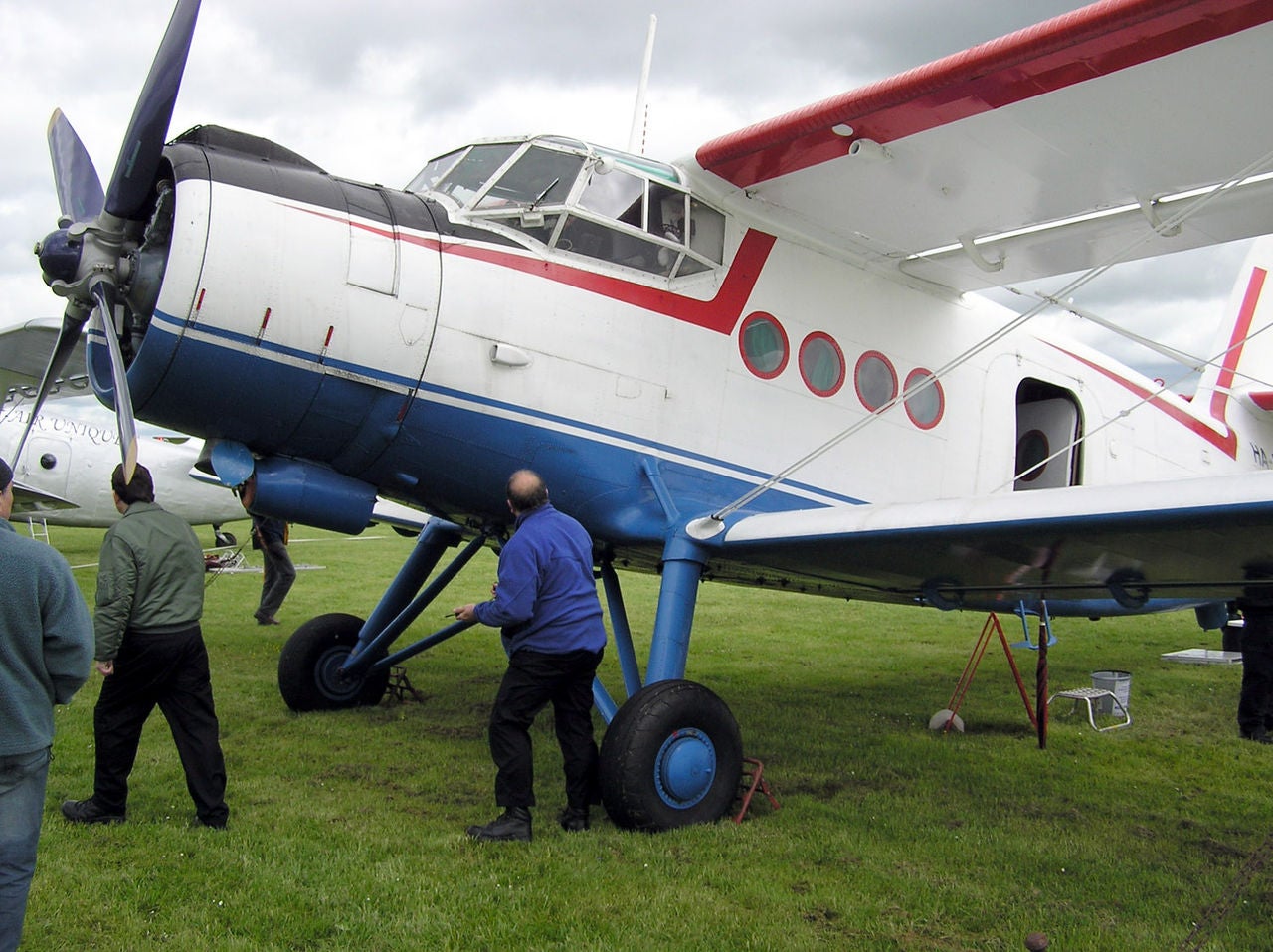
 MrPseudonym
> You can tell a Finn but you can't tell him much
MrPseudonym
> You can tell a Finn but you can't tell him much
02/17/2015 at 10:38 |
|
But dogfighting (and war in its entirety, for that matter), is dead because of geopolitics. Why would you attack a trade partner, anyways?
 killerkoolaid37
> You can tell a Finn but you can't tell him much
killerkoolaid37
> You can tell a Finn but you can't tell him much
02/17/2015 at 12:02 |
|
Thrust Vectoring is only good against a single target, and even then, you better make damn sure you get your shot off and it strikes true. You pull a vectored-thrust maneuver, you'll end up like that F22 in the gif above; nose high with a very high AOA, and slow as hell. Also known as a sitting duck. That adversary you just pulled in to to try and whip off a shot will have the energy advantage and will use it towards your untimely demise.